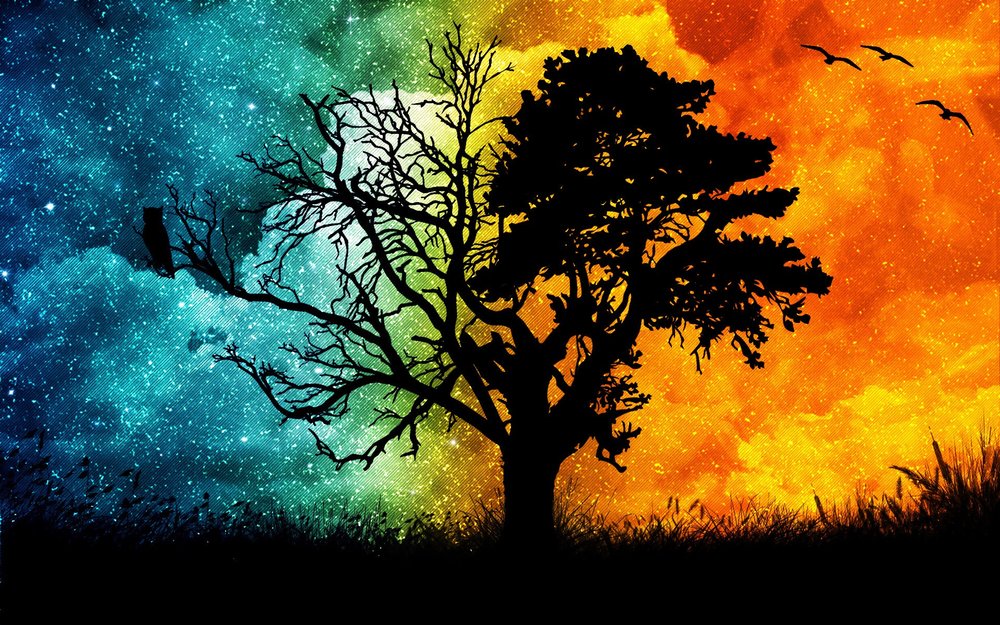Everything has a temperament: Colors, seasons, day and night
Part 2

TEHRAN — As formerly discussed, beside human beings everything in the universe namely animals, plants and inanimate objects, seasons, climatic conditions, age, or gender have a temperament (Mizaj).
In previous articles, Mizaj, its kinds, importance in living a healthy life, ways to recognize one’s distinguishing Mizaj, adopting the lifestyle that suits it, and the causes mal-temperament were thoroughly discussed.
Mizaj, representing the lack or excess of warmness and humidity in everything (human body, animals, plants, and objects), is a set of distinguishing characteristics. Treating everything in accordance with its own Mizaj would benefit us in that human beings are a part of the world and will be, one way or another, affected by all phenomenon and objects.
In other words everything can be classified according to its warmness and humidity.
In the previous article the Mizaj of organs were thoroughly explained. Below are the Mizaj of seasons and colors.
Colors temperament

Colors have temperament, meaning that they can reveal the real temperament of the objects or intensify the temperament of the individuals.
The color yellow is the symbol of warm and dry temperament and red represents warm and wet Mizaj. On the other hand dark colors such as black, grey, and brown symbolizes cold and dry Mizaj and bright colors such as white and blue are the symbols of cold and wet Mizaj.
Warm colors (red, orange, and yellow) are signs of warmness and can increase the temperature in a confined area. These colors are associated with danger, threat, warning, and movement and the way they affect the brain they increase metabolism and heat in the body and put it on alert which from Iranian traditional medicine point of view are sign of excessive heat.
Therefore, those with cold Mizaj who normally have slow metabolism, and feel sluggish had better use warm color for their clothes and houses while for people with warm Mizaj the reverse is true. People with warm temperament who are normally vibrant, brisk, lively and stressed should avoid using such colors and use cool colors such as white, blue, and light green. Such cool hues can bring about a more passive reaction in the brain and can make a person feel pleased and relaxed. Accordingly cool colors do not suit people with cold temperament.
Seasons temperament

Each season has a defining temperament and that’s why they differ from one another dramatically. So individuals must take special measures depending on the seasons.
- Spring: Spring is warm and wet. Individuals, especially those with warm and wet Mizaj, should avoid consuming sweets, fatty, greasy, and heavy food stuff and food items with warm Mizaj during spring. Instead they had better to eat light food with cold Mizaj.
- Summer: Summer is warm and dry. Abstaining from food stuff with warm Mizaj and sun exposure, and using food stuff with cooling characteristics and taking enough rest particularly for people with warm and dry Mizaj is highly recommended during summer.
- Autumn and winter: Autumn is cold and dry and winter is cold and wet. Those with cold Mizaj should take better care of themselves during these seasons. Cutting back on food stuff with cold Mizaj such as sour foods, dairy products and citrus fruits and staying away from cold places is recommended to people with cold Mizaj. On the other hand consuming sweets and food stuff with warming characteristics such as spices, getting exercise and staying in warm places is of benefits to them.
Day and night hours

The amount of warmness and humidity fluctuate over days and nights, therefore different temperaments form: morning is cold and wet, before noon is warm and wet, afternoon is warm and dry and evening and night are cold and dry. The various Mizaj of the day and night are the reasons behind mood swings and pain or discomfort varying during the day and night.
Seyed Mahdi Mirghazanfari, MD, holds a PhD degree in medical physiology and is an Iranian-Islamic traditional medicine researcher. He is also an assistant professor in AJA University of Medical Sciences, Tehran.
MQ/MG
Leave a Comment